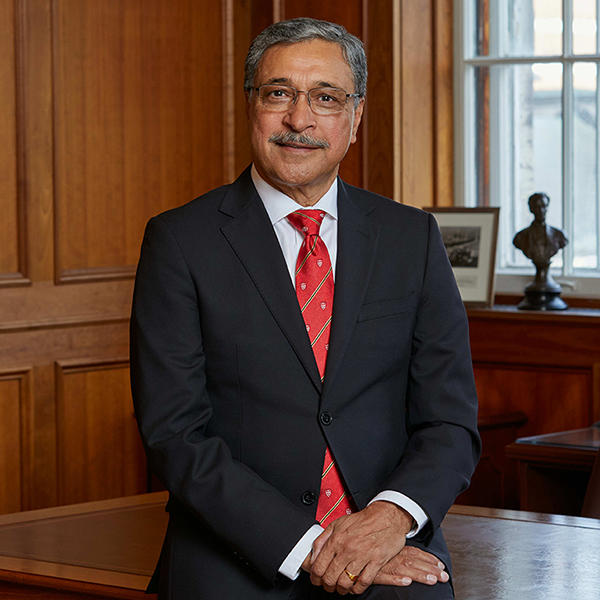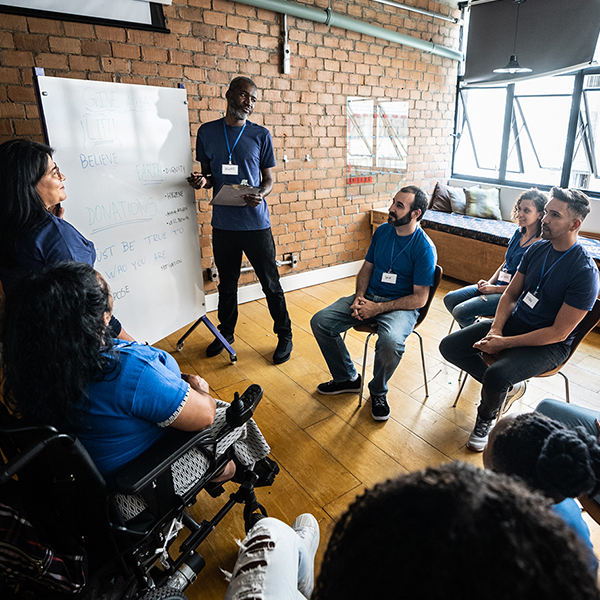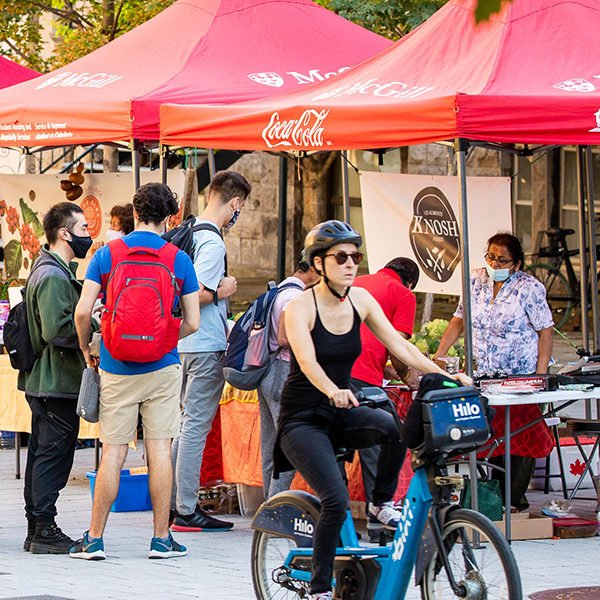The Hochelaga Rock sits prominently on McGill’s lower campus, across from the statue of the University’s founder James McGill. A monument commemorating the Iroquois village of Hochelaga, whose longhouses once stood where McGill students now gather, the rock is a potent symbol of the Indigenous presence at McGill — past, present and future.
But until it was relocated in the summer of 2016, the Hochelaga Rock had been hidden in an obscure corner of campus. Moving the rock was a recognition of Indigeneity at McGill — and it foreshadowed another, far-reaching initiative: in September 2016, the rock was, appropriately, the site of the official launch of the Provost’s Task Force on Indigenous Studies and Indigenous Education.
The report was largely prompted by the work of the Truth and Reconciliation Commission, itself a response to the calamities associated with the residential school system and the suffering endured by scores of Indigenous youth who were torn away from their families and communities. “Education is what got us into this mess,” said commission chair Murray Sinclair in one interview, “but education is the key to reconciliation.”
“The Truth and Reconciliation Commission’s report, released in 2015, included many calls for action directed at universities,” says McGill provost Chris Manfredi. “And since my time as dean of arts, I have been interested in how we could better serve and promote Indigenous students and faculty.”
With the TRC report serving as a catalyst, the task force set out first to identify what McGill was already doing. “Many fantastic initiatives were operating behind a veil, and with unsustainable funding,” says Associate Provost (Equity and Academic Priorities) Angela Campbell, BA’95, BCL’99, LLC’99, who co-chaired the task force with former First Peoples’ House coordinator Paige Isaac, BSc’08 (a Mi’kmaq woman from Listuguj First Nation), and associate professor of political science Hudson Meadwell. “One immediate impact of the task force has been to raise awareness of these initiatives, so we can build on what exists.”
But the task force’s impact will extend much further. The final report, released in summer 2017, includes 52 “calls to action ” focusing on several main concerns: recruiting and retaining Indigenous students, staff and faculty; ensuring the symbolic recognition and physical representation of the Indigenous presence at the University; incorporating Indigenous perspectives into academic and research programs; and engaging in reciprocally productive relations with Indigenous communities.
A dramatic increase
One thousand Indigenous students enrolled by 2022: that is the magic number in Call for Action #1, and it marks a significant jump from the 385 Indigenous students currently on the books. “The number is very challenging,” agrees Deputy Provost (Student Life and Learning) Ollivier Dyens. “It’s one thing to bring these students to campus, but it’s another to keep them here through to graduation, and it’s even harder to make sure they have a positive experience at McGill.”
Kakwiranó:ron Cook, recently appointed as the special advisor on Indigenous initiatives in the Office of the Provost, is creating an Office for Indigenous Strategy (OIS). It will be his job to monitor McGill’s progress in fol-lowing up on the task force’s recommendations. The recruitment of Indigenous students will be one of the key areas he focuses on.
Cook identifies one change that will immediately increase the number of Indigenous students on campus. “Currently, students in Canada can self-identify as First Nations, Inuit or Métis, but Indigenous students in the United States have no means to identify themselves as Native Americans, Hawai’ians or Alaskans,” says Cook, a member of both the Mohawk Nation of Akwesasne, straddling the Quebec-Ontario-New York border, and the Oglala Lakota Sioux Nation at Pine Ridge, South Dakota. “Our data needs to reflect the diversity among Indige-nous peoples in North America.”
Beyond that, he notes, “We’re looking at a long-term recruitment strategy, which will involve being more pre-sent in Indigenous communities across Quebec.” Two members of McGill’s student recruitment team will focus on encouraging Indigenous students in communities around Quebec, Canada and the U.S. to consider McGill as a viable option for their future studies.
These efforts will complement established initiatives such as the Eagle Spirit Camp, launched in 2006 through the First Peoples’ House and now led by the Faculty of Medicine’s recently created Indigenous Health Professions Program. Designed for Indigenous high school students, the camp emphasizes health and science while encouraging participants to continue their studies and enabling them to meet peers from across Canada. “Our goal is to promote McGill, but also post-secondary education generally,” says Cook.
But interest and awareness are only part of the puzzle — as the task force report observes, the University also needs to develop a financial support system for potential students. “I’ve been a recruiter for McGill for more than seven years, and I’ve seen the University lose a lot of Indigenous students to other universities offering far better financial incentives,” Cook says.
Also, he notes, many Indigenous students not only come from small, remote communities, but are also the first generation of their families to pursue post-secondary education — Montreal and McGill can both be in-timidating environments for them. “So once students are here, we will need dedicated Indigenous staff, help-ing students with their needs: whether it be finding housing, providing tutoring, navigating McGill’s bureaucracy or planning their careers.”
Creating community
As a crucial home away from home for many of McGill’s Indigenous students, First Peoples’ House (FPH) provides many of these critical services.
“First Peoples’ House allowed me to connect with students who have similar lived experiences and who understand things in a way my other friends wouldn’t,” says Victoria Gagné, a Métis management student from Regina. “The Indigenous population at McGill is incredibly small, so without First Peoples’ House I would have thought there was no one else like me here, which would have been extremely isolating.”
Upon arriving at McGill, Gagné sought support from the FPH’s Cousins Indigenous Student peer mentoring program, an experience she describes as “extremely important” in her transition to the University; in subse-quent years, she acted as a mentor to new students, in addition to getting involved with McGill’s Indigenous Student Alliance, eventually serving as co-president.
Law student André Moreau, a Métis from Penetanguishene, Ontario, reinforces the importance of FPH, noting that it reaches out to incoming students with introductory emails even before they arrive on campus. “Having others to connect with has been crucial. It also creates the opportunity for older students, like myself, who have already earned a degree, to help guide and encourage other students, easing their stress a bit,” he says. “First Peoples’ House has a nice looking-after-each-other feel that is unique on campus.”
Creating community is a fundamental goal of FPH, says Allan Vicaire, who hails from the Mi’kmaq community of Listuguj, Quebec and this fall took over from Paige Isaac as the new associate director for FPH. “We have lots of ways of doing this — we provide one-on-one support, organize trips, invite elders to campus, host an annual Indigenous Awareness Week and an annual pow-wow, and have weekly home-cooked soup-and-bannock lunches,” he says. “The cultural part of our program is what makes First Peoples’ House special.
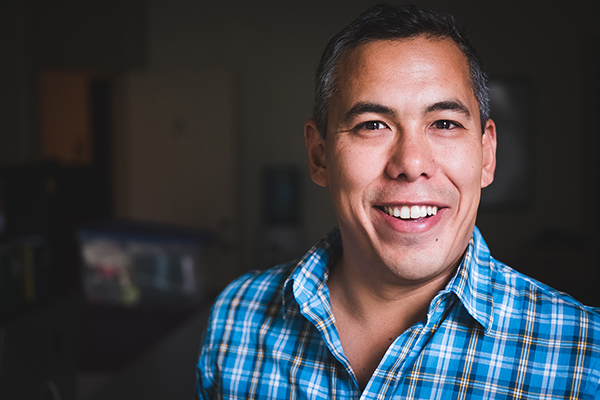
“Indigenous students come from different life experiences compared to most McGill students. Belonging to a community that honours their ways of knowing is vital for their well-being and their success at McGill. It is im-portant that we ensure that our services to support students are culturally relevant and guided by our knowledges,” says Vicaire. In November he hosted a weekend retreat with Indigenous students in Ottawa to discuss what supports will be needed for the anticipated increase in students. “We’re looking in a new direction fol-lowing the task force,” he says. “There is change coming, and at First Peoples’ House students are going to guide that change.”
A shift in consciousness
McGill launched a minor in Indigenous studies in 2014, and classes in the program have been consistently filled to their maximum. “Across the University, and the country, there is a shift in consciousness about Indigenous topics, knowledge, and political relations,” says the program’s director, assistant professor of history Allan Downey, who is Dakelh from the Nak’azdli First Nation in central British Columbia.
“Seeing the support for this program from students, staff, and faculty has been fantastic. But there’s a learning process for the University to understand what Indigenous studies is,” says Downey. “It’s not simply about In-digenous content — it’s about the engagement with Indigenous knowledge, with its distinct methodology, norms, and expectations.”
The program currently can’t meet demand, with Downey as the only permanent faculty member. “We’d like to offer more, such as giving students opportunities to go on internships, have field experience, and really give back to the community,” he says, noting that Indigenous studies majors have proven successful at many other Canadian universities.
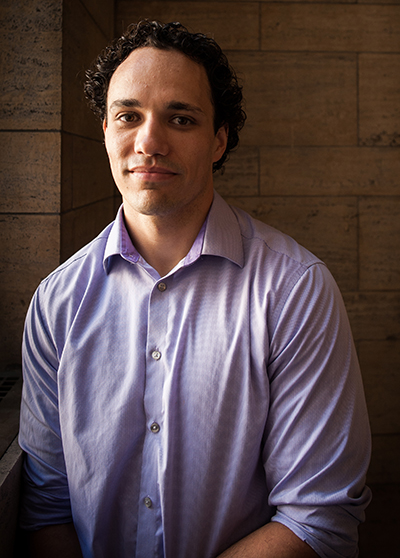
“It’s great to be having success, but we’re realistic. We’re a small, upstart program still trying to secure fund-ing.” Still, the program has garnered attention, and the task force report has recommended developing it fur-ther as a major program, with the intent of eventually establishing an Institute of Indigenous Studies and Community Engagement.
Currently Downey is one of only a handful of Indigenous tenured or tenure-track faculty members. Another is social work professor Cindy Blackstock, of the Gitksan First Nation, who joined McGill in 2016. “I think it critical that McGill reflects the society we live in, which includes recruiting Indigenous faculty and students, but you have to tackle the bones of the institution, which are colonial, and see how they could be reimagined to be more welcoming not only to the ontologies and epistemologies of Indigenous peoples, but to an increasingly diverse Canada itself,” she says. “And then Indigenous students and faculty will choose to come.”
Indeed, Blackstock chose to come when the University recognized the importance of her non-academic work in addition to her many scholarly contributions. As executive director of the First Nations Child and Family Caring Society, Blackstock led a Canadian Human Rights Tribunal case against the federal government on inequita-ble funding for First Nations child welfare, successfully arguing that this chronic underfunding was racial discrimination. The current government (after much lobbying by Blackstock and others) pledged to address the underfunding in its 2018 budget.
“I couldn’t abandon my work attacking racial discrimination in federal fiscal policy, leaving behind the 165,000 kids represented in the tribunal, to take an academic position. But I am also at a stage in my career where I see a value in mentoring a new generation of social workers to continue this work,” she says. “So we were able to craft a position where I didn’t have to make that choice, but could do both at the same time.”
Reimagining relationships
Blackstock’s work represents one aspect of the need for productive community engagement foregrounded by the task force; the Indigenous studies program also emphasizes the importance of reciprocity in exchanges with communities. “We are active in local communities, especially the Mohawk communities of Kahnawà:ke and Kanehsatà:ke, through our public events and our speaker series, consulting with them on who they would like to see, working out partnerships, and bringing speakers out to the community,” says Downey.
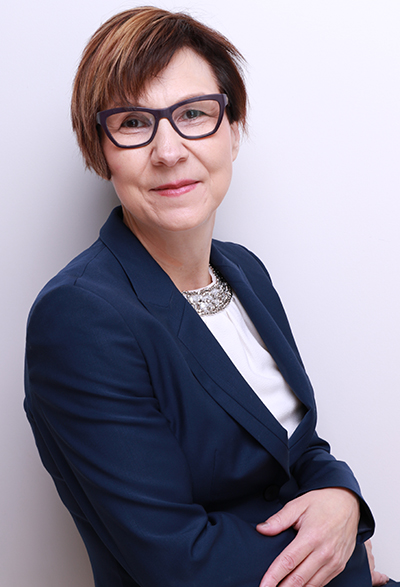
However, McGill’s history of interactions with Indigenous peoples is “complex,” to use the term adopted in the task force’s report, and the same could be said for universities in general. “There is a horrific legacy of the academy entering into communities and basically extracting objects and knowledge. And this remains a prob-lem today. Just as there are great, fruitful and reciprocal relationships, there remain cases of this extraction,” says Downey.
“We need to ensure that we are operating in real partnerships with shared benefits, rather than simply parachuting in teachers, students, or researchers, who take away knowledge without giving anything back, per-petuating colonial approaches,” says Angela Campbell.
Increasingly, Indigenous communities across Quebec are collaborating with McGill to benefit from university education adapted in culturally relevant ways. The Office of First Nations and Inuit Education, based in the Fac-ulty of Education, is a pioneer in this realm. The office was founded in 1981 to design, develop and provide teacher-education and professional development programs for Indigenous teachers in First Nations and Inuit communities across Quebec. It currently works with Indigenous education authorities such as the Kativik School Board in Nunavik, the Cree School Board, the Listuguj Education Directorate and the Kahnawà:ke and Kanehsatà:ke education centres.
Another longstanding collaboration can be found at Macdonald Campus where the Centre for Indigenous Peo-ples’ Nutrition and Environment (CINE) carries out participatory research projects guided by Indigenous part-ners to address questions and concerns about the environment and the sustainability of traditional food systems. The members of CINE’s governing board include Dene national chief Bill Erasmus and Eva Johnson, the environment protection coordinator for the Mohawk Council of Kahnawà:ke.
Downey sees the task force report as a potential turning point for McGill. “We have to be accountable to those recommendations, and act on them, and that means a lot of heavy lifting across all levels. There is the potential now to really shift the course of McGill in a great way, which will have an impact on all of us at the University and in positive relationships with the communities around us,” he says.
Blackstock agrees. “The commitment to Indigenous students benefits all students. I am hoping that not only will Indigenous students be able to walk in McGill’s world, but that all students will be able to walk in both worlds. And, increasingly, that McGill respects and honours the thought, knowledge, experiences and contributions of Indigenous peoples.”
A broader approach to law
The 2015 Truth and Reconciliation Commission’s report included among its calls for action that law schools “re-quire all law students to take a course in Aboriginal people and the law … This will require skills-based training in intercultural competency, conflict resolution, human rights, and anti-racism.”
To address this, the Faculty of Law launched its own task force running in parallel with the provost’s task force. The Faculty created the new position of student advising administrator (Indigenous & equity-seeking student groups) this past fall. It also welcomed a record 10 Indigenous students into its first-year class. New courses on criminal justice and property law include sections on Indigenous legal traditions.
“I’m seeing a lot of willingness on the part of students and faculty to engage with the idea of reconciliation. People see the need to do it,” says Véronique Bélanger, BCL’91, LLB’91, LLM’99, the Faculty’s assistant dean (strategic planning) and the chair of its task force. Last January, first-year law students took part in an intensive week on Indigenous legal traditions, and the Faculty continued this initiative by introducing 2017’s first-year students to Indigenous legal traditions in their first week of classes. Aaron Mills, who is Anishinaabe, will be joining the Faculty in August as an assistant professor. He’ll be teaching a course on Indigenous constitutionalism.
Last summer, the Faculty offered a one-credit Anishinaabe law course led by John Borrows, the holder of the University of Victoria’s Canada Research Chair in Indigenous Law, who is at McGill for one year as Distinguished Tomlinson Visiting Professor. Borrows, himself Anishinaabe/Ojibway, brought 20 students (selected from 60 applicants) for a three-day intensive course to his home community of Neyaashiinigmiing on the Bruce Penin-sula in Georgian Bay, where he and a group of elders taught Anishinaabe law, focusing not just on content, but on the sources of law in Indigenous traditions.
“Every lesson was tied closely to language and linked to stories. The course really challenged notions of what law can be,” says Métis law student André Moreau. “It’s not just a code or legislation, but something much more lived.”
